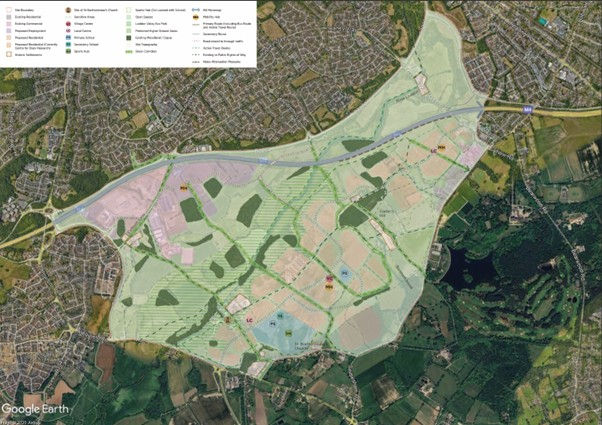Hall Farm alternatives
- paulstevens24

- Sep 20, 2023
- 3 min read
We have known for a long time that viable alternatives to building houses at Hall Farm are being ignored by Wokingham Borough Council. As far back as June 2022 we published a Blog Post highlighting the possibility of building at Ashridge and at Twyford. It would be great to report that this oversight is now being corrected and that the proposed Local Plan Update will be giving full and equal consideration to ALL the possible sites for building the houses required, together with a thorough examination of the implications, possibilities and consequences. Sadly, this is not the case, so let us help to redress this imbalance.
In favour of building at Twyford: The opening of the Elizabeth Line makes Twyford a highly sustainable location, providing direct rail services into central and east London. It could provide 2,500 new homes in the north of the Borough, bringing some redress to the imbalance that currently exists. (Over the last 10 years 97% of the Wokingham Borough’s housing growth has been in the south of the Borough with just 3% in the northern parishes of Charvil, Remenham, Ruscombe, Sonning, Twyford and Wargrave.)

Against building at Twyford: The area is designated green belt, which for many makes it sacrosanct, but which we will come onto.
In favour of building at Ashridge: It is not on a flood plain, like Hall Farm, nor is it designated green belt, like Twyford. Also, like Twyford it has good transport links and could potentially deliver in the region of 3,000 homes.

Against building at Ashridge: The area is bounded by the M4 and A329, which could potentially create problems with air and noise pollution.
Developers like to talk about “mitigation” when presented with environmental problems, so what might be mitigating factors in this case? Road transport is becoming less polluting with the advent of electric vehicles, and the boundary roads around the Ashridge proposal would also act as limits to further development, preventing “urban sprawl”.
The case for building on green belt is complex, but some 31 per cent of new residential builds in Maidenhead and Windsor, Berkshire, were located on the green belt between 2013 and 2017, 10 times higher than the national average. The Guardian Newspaper has published a very helpful list of 6 reasons for building on green belt land. They include:
1. It's not all green and pleasant land. (Green belt land has no inherent ecological or agricultural value, nor is it chosen because it has natural beauty or protected wildlife.)
2. It doesn't actually stop cities growing. (Towns and cities grow by developing beyond their green belts and creating what we have come to term a commuter belt, like Reading and South Wokingham.)
3. The countryside isn't being concreted over. (Many people think that more than 50% of England is built upon, the actual figure is 10.6%.)
4. It encourages inequality. (The green belt increases social inequality by acting as a wall that confines urban dwellers at increasingly higher densities.)
5. It worsens the housing crisis. (The greatest need for homes is in London and the south-east – the area that also has the most green belt land.)
6. It's partly why house prices are out of reach for so many. (The green belt constricts supply and forces up land and house prices.)
So why are alternative sites for house building being ignored in favour of building on flood plain with no transport infrastructure? Why is there a sudden “need” to get the Local Plan pushed through after languishing in the "long grass" for years? A cynic might suggest it has something to do with the threat by the Labour Party, if elected, to give councils more powers to build on green belt land to boost housing.
I know what I will be voting for, given the chance.




Comments